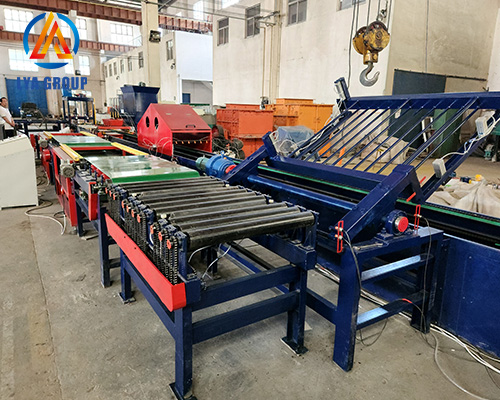Key features and components typically found in a modular full automatic production line
News 2024年4月9日 95

Modular Design: The production line is designed with a modular approach, where each module or unit is responsible for a specific task or operation in the manufacturing process. These modules are designed to be easily interconnected and integrated into the overall production line.
Automation: The production line is fully automated, meaning that a significant portion of the manufacturing processes is carried out by machines or robotic systems. Automated systems handle tasks such as material handling, assembly, testing, packaging, and quality control. This automation helps to improve efficiency, reduce labor costs, and minimize human error.
Conveyors and Material Handling Systems: The production line includes a network of conveyors and material handling systems to transport raw materials, components, and finished products between different modules or workstations. These systems may utilize technologies such as belt conveyors, robotic arms, or automated guided vehicles (AGVs) for seamless material flow.
Assembly and Production Stations: The production line consists of multiple assembly and production stations where various manufacturing operations are performed. Each station is equipped with specialized equipment, tools, or machinery required for specific tasks. For example, there may be stations for component assembly, welding, machining, or painting, depending on the nature of the product being manufactured.
Control Systems: A comprehensive control system is implemented to monitor and control the operation of the entire production line. This includes programmable logic controllers (PLCs), human-machine interfaces (HMIs), and supervisory control and data acquisition (SCADA) systems. These control systems enable real-time monitoring, data collection, and adjustment of production parameters to ensure optimal performance and quality.
Quality Control and Inspection: Quality control measures are integrated into the production line to ensure that products meet the required standards. This may involve incorporating inspection sensors, vision systems, or automated testing equipment at critical points in the production process. These systems can detect defects, measure dimensions, perform functional tests, and reject or sort out non-compliant products.
Data Integration and Analysis: A modular full automatic production line often includes data integration and analysis capabilities. Production data, such as production rates, quality metrics, and equipment performance, can be collected and analyzed to identify areas for improvement, optimize production processes, and support decision-making.
Scalability and Flexibility: The modular design of the production line allows for scalability and flexibility. Additional modules or units can be easily added or removed to adapt to changing production demands or accommodate new product variants. This modular approach enables manufacturers to optimize production efficiency and respond quickly to market dynamics.
It’s important to note that the specific configuration and components of a modular full automatic production line can vary depending on the industry, product type, and manufacturing requirements. Manufacturers typically customize and configure the production line according to their specific needs and objectives.